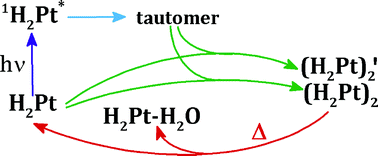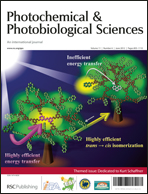Abstract
7,8-Dihydrobiopterin (H2Bip) and 7,8-dihydroneopterin (H2Nep) belong to a class of heterocyclic compounds present in a wide range of living systems. H2Bip accumulates in the skin of patients suffering from vitiligo, whereas H2Nep is secreted by human macrophages when the cellular immune system is activated. We have investigated the photochemical reactivity of both compounds upon UV-A irradiation (320–400 nm), the chemical structures of the products and their thermal stability. The study was performed in neutral aqueous solutions. The reactions were followed by UV/Visible spectrophotometry and HPLC and the products were analyzed by means of electrospray ionization mass spectrometry and 1H-NMR. Excitation of H2Bip and H2Nep leads to the formation, in each case, of two main isomeric dimers. The latter compounds undergo a thermal process that may consist in a retro [2 + 2]-cycloaddition and hydrolysis to yield the reactant (H2Bip or H2Nep) and a product that has incorporated a molecule of H2O.

- This article is part of the themed collection: In honour of Professor Kurt Schaffner

 Please wait while we load your content...
Please wait while we load your content...